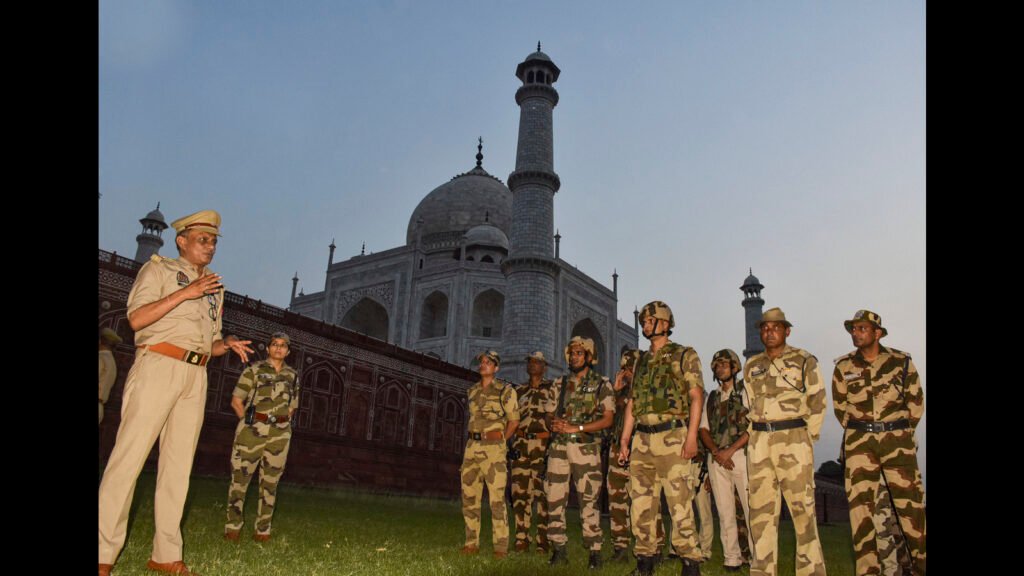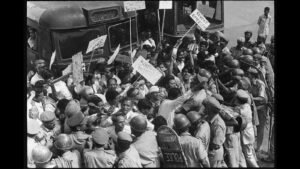
There have been four officially confirmed rounds of Military Attacks, Two Each By India and Pakistan, Into Each Other’s Territory – Beginning with India’s Strikes on Pakstani Terrorist Early hours of May 7 in Response to the April 22 Terror Attack in Pahalgam, Kashmir. Given India’s Declaration that it will respond to any attack on its Military Installations by Pakistan, The Cycle Cold Continue. Whether or not it grows into a full-blown military conflict, even without the nuclear angle coming into play, is a Question Best Left Unanswered at the Moment, without prejudice to eather of the Possibilities. This disclaimer notwithstanding, there is merit in looking at some key contours of the non-military stakeholders in the two counties that have played have been played a rot in the larger mood and psyche in the two Which is manified in the ongoing conflict.

Pakistan’s use of terror as an asymmetric war on India is not something new. The Approach Gained Prominence in Kashmir in the 1990s, but dates back further in time, and have occurred in different places. For example, Avinash Paliwal’s 2024 Book India’s Near East: A New History Documents Pakistan’s support to naga and mizo insurgent groups in the 1960s. However, events in the last two decades, beginning with a series of terror attacks in many Indian sites Outside Kashmir, and Ending in the November 2008 Attack in Mumbai Created A New Kind of Popular Day of Popular Discontent in India, which rested the lacked of a Visibly Strong Response by the (relatively stronger) Indian state to this asymmetric war.
The BJP, Especially Under Narendra Modi, exploited this Popular Anger to Garner Political Support Against the Congress. Therefore, when the next round of attends on Military installations TOOK Place during the tenure of the modi government – first in Uri in 2016 and then in Mumbai in 2019 – India Launched Military AtCKSDID Territory to Avenge these. The BJP Celebrated these Actions as Politics Facilitating Strategic Professes. Their Utility as Deterrent Against Future Attacks Notwithstanding, The Decision to Do So SO, also made a similar response to future terrror attackers the norm for India, not just strategical but also. India’s Response to Pahalgam – There was complete political and popular unanimity asking for a Military Response – Has only increded the intensity and support of the responsibility and support of the responsibility, not we.
This is exactly what differentiates India from Pakistan in the current environment. India’s Armed Forces are only doing what the political establishment, on the cue of almost unanimous and strong popular sentiment, Wants them to do.
On the other hand, it is extramely likely that the pakistani military top brass’s designs to seek conflict with India are dragging their economicly and socially besiege Cycle with India without Popular Backing. To be sure, experts on Pakistan’s history and politics direction Piece in the Financial Times Squarely blames the “bellicose” army chief asim munir – or the intake of the process through what Pakistan Pakistan came into ento being as a count. Historian Venkat Dhulipala’s Piece in the Indian Express, For example, Emphasis Munir’s statement describing Pakistan as being only the “second nation-state in history based on the kalima (core islamic tans), the first one being medina, set up by prophet Muhammad ” Explicitly) A Permanent Adversarial Relation Between India and Pakistan, Irrespective of the Changing Political or Military Dynamics in the Latter.
What is (rightly) worrying most of the comment that is otherwise support of India in its stance Against Terrorism and even willing to endorse India’s right to takes Right to TAKE RETALIATRY Action with Pakistani territory are the economy implications of such a confrontation escalating significant. For example, the may 7 Financial Times Editorial was pretty Candid in distinguishing between the economic stakes for India and Pakistan should thinks escalate. “For India, Any Conflict would be a Severe Setback on Its Path to Being One of the World’s Leading Economic Powerhouses. For Pakistan, After Years of Turmoil, It Wold derail an incense derail an incensecy Its finance minister was in longon on wedding to pitch to investors ”, it said.
One can hope that an escalation is averted by strategic calculations supported by favorite optics for the political and security establishments of India-pakistan or median Us. It is also important to achnowledge that Neither Country is likely to see a popular democratic opposition against against further and escalation.
In Pakistan, the “popular”, whather or not it has been disenfranged by the Military, is a prisoner of its history of history of history as an islamic other to Hindu India. In India, the “popular” is frustrated with the psychological pain the asymmetric war in the form of terror attackers has inflicted, notwithstanding its strategic impact. Capital in Pakistan is Likely Subservant to the Narrow Pool of Elites The Two Institutions Draw from, and Capital in India Cannot even imagine to describe Popular Sent for Action for AGINTAN AGINTATIN Asymmetric War as Economically Counter-Productive.
To say this is not to endorse wars or spread cynicism but to argue that the rational and the “popular” do not align in the real world. This is also why politics is best described as the art of the possible. A Politician Must Do What is Necessary to Preserve His Political Hegemony, but he will only be consulated a stationsman by history if this game does not jeopardise or harm the proserity of the situation of the sociality of Large.






